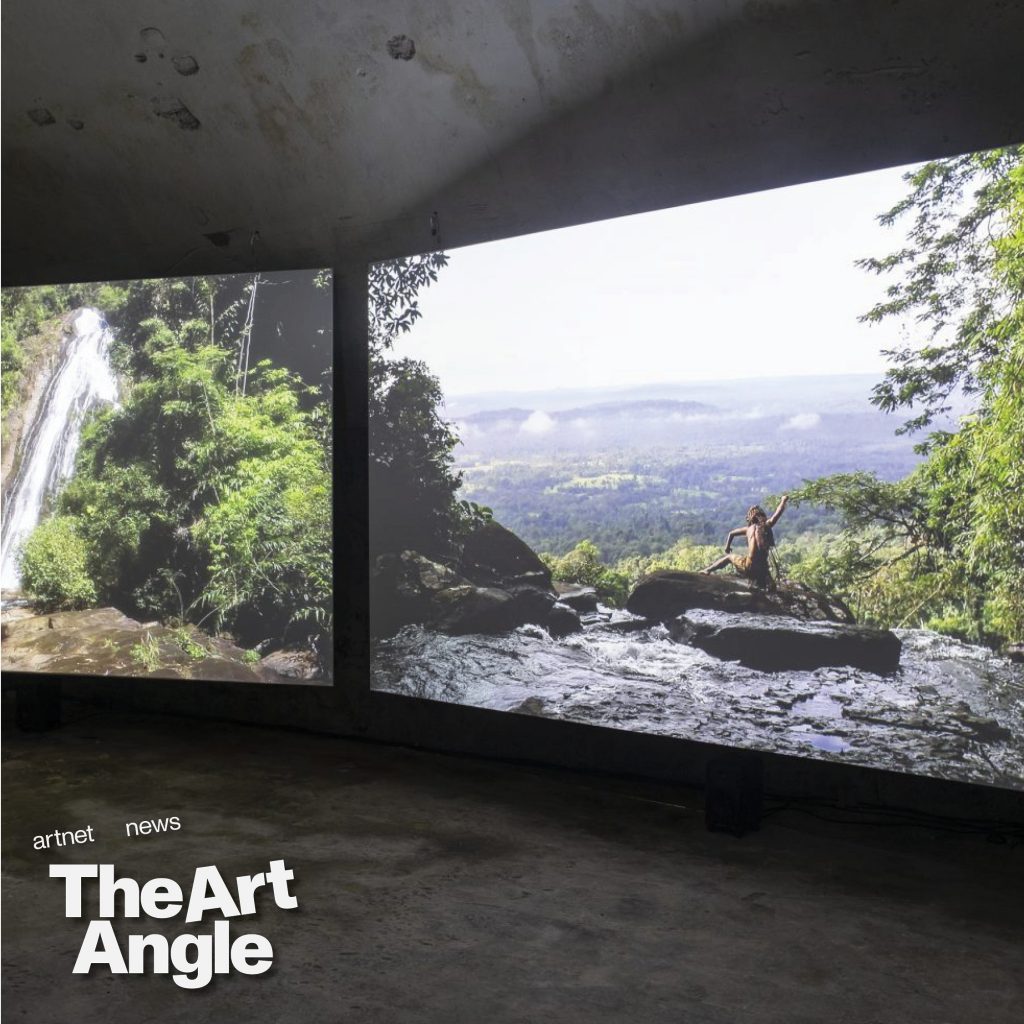The Art Angle
The Art Angle Podcast: How Facebook and the Helsinki Biennial Share a Vision for the Art World’s Future
Maija Tanninen, director of the Helsinki Biennial, and Tina Vaz, head of Facebook Open Arts, join the Art Angle this week.

Maija Tanninen, director of the Helsinki Biennial, and Tina Vaz, head of Facebook Open Arts, join the Art Angle this week.

Artnet News

Welcome to the Art Angle, a podcast from Artnet News that delves into the places where the art world meets the real world, bringing each week’s biggest story down to earth. Join us every week for an in-depth look at what matters most in museums, the art market, and much more with input from our own writers and editors as well as artists, curators, and other top experts in the field.
Some of the most impactful stories to surface this past year have revolved around three major issues affecting the world as a whole: there’s a worsening climate emergency, a global health crisis and—in the fold—a breakneck acceleration of technology that’s increasingly entangling itself into every aspect of our lives.
When it comes to the art world, we can probably agree it’s time to ask some hard questions. Should there be so many art events? How should we gather? Do we need to experience art in person to understand it?
During lockdowns around the world over the last 18 months, we’ve been learning just how fluidly art can transition into the digital realm—and how clumsy a failed attempt can be.
Among the art events that managed to pull off successful ventures this year is the first edition of the Helsinki Biennial, which took on these questions. Taking place on an island off the coast of the capital of Finland, the exhibition, called “The Same Sea,” meets our collective moment, exploring concerns around our interconnectedness, nature, and sustainability. And it’s not just in theme: the Helsinki Biennial is calculating and trimming its climate footprint every step of the way with a goal of becoming the first carbon neutral biennial by 2035.
In the middle of a pandemic and rising temperatures, 41 artists are presenting works that carefully consider the surroundings of Vallisaari Island and the array of plants and creatures that populate it. To reach a wider audience when travel is both restricted and carbon-intensive, the biennale, which is on view until September 26, has partnered with Facebook Open Arts to explore how technology might help connect audiences with artworks peppered on the island.
This week, we’re thrilled to welcome Maija Tanninen, director of the forward-thinking Helsinki Biennial and the Helsinki Art Museum, and Tina Vaz, Head of Facebook Open Arts, to talk with Europe editor Kate Brown about the Helsinki Biennial’s unique approaches to greening a biennial, and how technology can be used to bring us closer to nature in meaningful ways.
If you enjoy this conversation, please join our panel conversation, “Helsinki Biennial and Facebook Open Arts – Future Visions / Art & Tech”—which will be available to watch on our Facebook page on September 22.
Listen to Other Episodes:
The Art Angle Podcast: Artists in Residence at the World Trade Center Reflect on 9/11
The Art Angle Podcast: Genesis Tramaine on How Faith Inspires Her Art
The Art Angle Podcast: The Bitter Battle Over Bob Ross’s Empire of Joy
The Art Angle Podcast: How Britney Spears’s Image Inspired Millennial Artists
The Art Angle Podcast: How the Medicis Became Art History’s First Influencers
The Art Angle Podcast: How Two Painters Helped Spark the Modern Conservation Movement
The Art Angle Podcast: The Hunter Biden Controversy, Explained
The Art Angle Podcast (Re-Air): How Photographer Dawoud Bey Makes Black America Visible